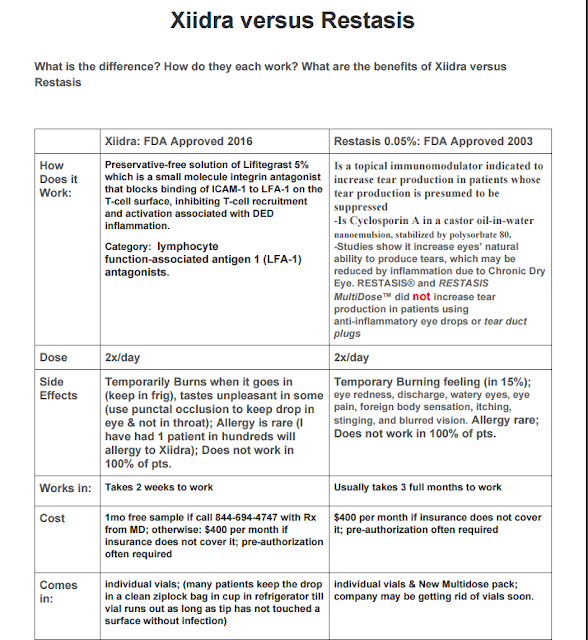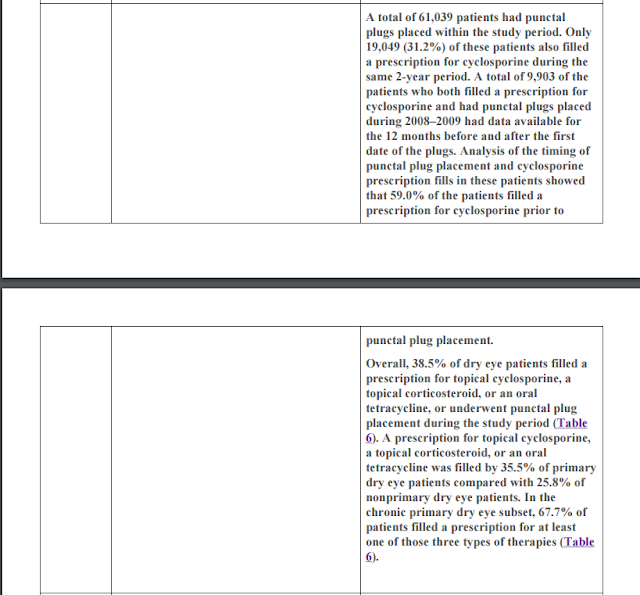References:
Ther Clin Risk Manag. 2013;9:409-15. doi: 10.2147/TCRM.S49754. Epub 2013 Oct 25.
Health claims database study of cyclosporine ophthalmic emulsion treatment patterns in dry eye patients.
Author information
Abstract
BACKGROUND:
Dry eye is a multifactorial, symptomatic disease associated with ocular surface inflammation and tear film hyperosmolarity. This study was designed to assess patterns of topical cyclosporine ophthalmic emulsion 0.05% (Restasis®) use in dry eye patients and determine if there were any differences in use based on whether dry eye is physician-coded as a primary or nonprimary diagnosis.
METHODS:
Records for adult patients with a diagnosis of dry eye at an outpatient visit from January 1, 2008 to December 31, 2009 were selected from Truven Health MarketScan® Research Databases. The primary endpoint was percentage of patients with at least one primary versus no primary dry eye diagnosis who filled a topical cyclosporine prescription. Data analyzed included utilization of topical corticosteroids, oral tetracyclines, and punctal plugs.
RESULTS:
The analysis included 576,416 patients, accounting for 875,692 dry eye outpatient visits: 74.7% were female, 64.2% were ages 40-69 years, and 84.4% had at least one primary dry eye diagnosis. During 2008-2009, 15.9% of dry eye patients with a primary diagnosis versus 6.5% with no primary diagnosis filled at least one cyclosporine prescription. For patients who filled at least one prescription, the mean months’ supply of cyclosporine filled over 12 months was 4.44. Overall, 33.9% of dry eye patients filled a prescription for topical cyclosporine, topical corticosteroid, or oral tetracycline over 2 years.
CONCLUSION:
Patients with a primary dry eye diagnosis were more likely to fill a topical cyclosporine prescription. Although inflammation is key to the pathophysiology of dry eye, most patients seeing a physician for dry eye may not receive anti-inflammatory





